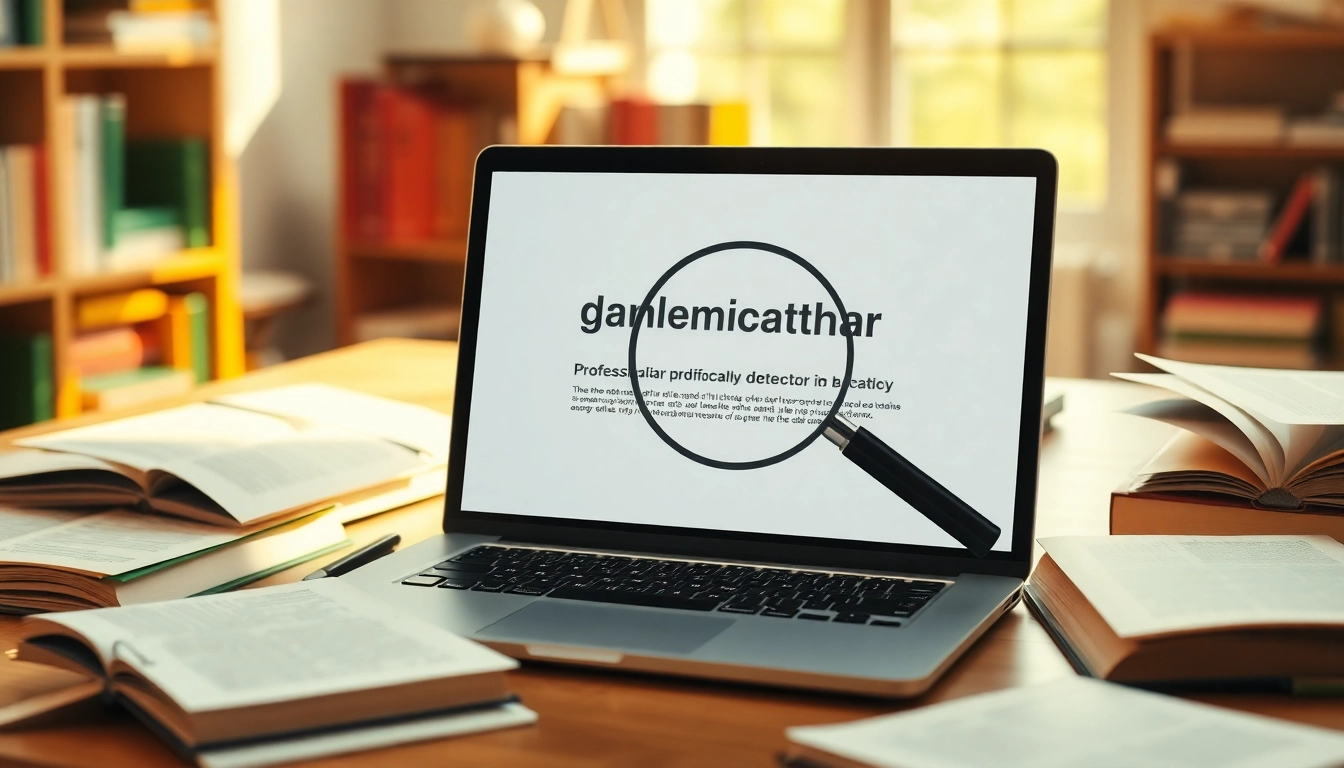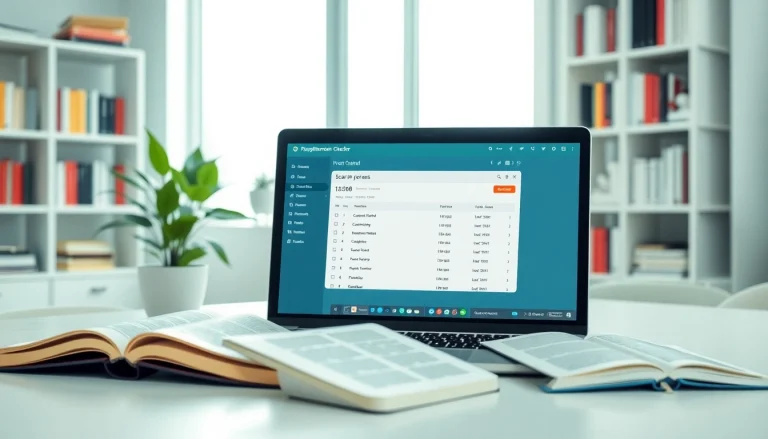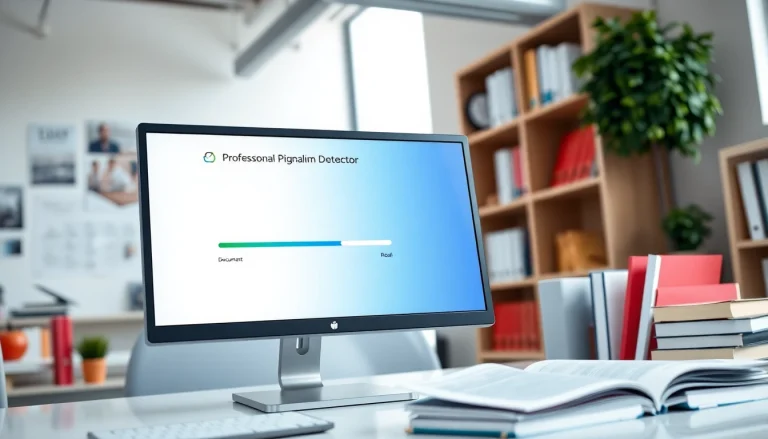Understanding the Importance of a Plagiarism Detector
In an era where access to information is unprecedented, the challenge of maintaining originality and integrity in written content has become paramount. Whether in academia, professional writing, or content creation, the need to ensure that work is free from plagiarism is essential. A reliable plagiarism detector serves as a crucial tool by identifying similarities with existing content and helping authors uphold ethical standards.
Why Academic Integrity Matters
Academic integrity is a foundational element of scholarly work, underpinning the value of education and research. Violations of this principle, such as plagiarism, can lead to severe consequences, including academic penalties, loss of credibility, and legal ramifications. Ensuring that students understand the importance of originality fosters a culture of honesty and responsibility, essential for their personal and professional development.
The Role of Plagiarism Detectors in Education
Plagiarism detectors play a pivotal role in educational institutions by enabling educators to uphold standards of originality. These tools facilitate the identification of copied text, allowing educators to address potential misconduct promptly. By integrating plagiarism checkers into the curriculum, educators can teach students about proper citation practices and the significance of producing original work.
How Plagiarism Detectors Enhance Content Quality
Beyond mere detection, plagiarism detectors enhance the overall quality of content by encouraging thorough research and writing practices. By analyzing submitted documents, these tools provide insights into text originality and areas for improvement. As a result, authors are motivated to craft unique content that contributes to their field of study or industry.
Key Features of an Effective Plagiarism Detector
Not all plagiarism detectors are created equal. The effectiveness of a plagiarism detection tool is contingent upon various key features that enhance its utility for users. Here, we delve into the attributes that distinguish high-quality plagiarism detectors.
Real-Time Text Comparison Tools
The capability to compare text in real-time significantly boosts the utility of a plagiarism detector. This feature enables users to see immediate results as they compose, offering insights into areas that may inadvertently contain plagiarized material. Consequently, authors can adjust their writing instantaneously, fostering a more streamlined writing process.
User-Friendly Interfaces
A user-friendly interface is vital for adoption, especially among less tech-savvy users. Effective plagiarism detectors should have intuitive layouts, making it easy for users to upload documents and understand report outputs without requiring extensive training. This accessibility encourages widespread usage among students and professionals alike.
Comprehensive Reporting Capabilities
Comprehensive reporting is central to the effectiveness of plagiarism detectors. Reports should not only identify instances of potential plagiarism but also provide contextual references, including original sources and similarity indexes. This detailed feedback helps users understand their writing better and make necessary adjustments to enhance originality.
How to Choose the Right Plagiarism Detector
With numerous options available, choosing the right plagiarism detector can be overwhelming. However, several key considerations can help you make an informed decision based on your specific needs.
Assessing Accuracy and Coverage
The primary function of a plagiarism detector is to provide accurate results. It’s essential to assess the tool’s database coverage, as robust tools access extensive libraries of texts, including academic papers, online publications, and books. Look for tools that are transparent about their databases and methodologies, ensuring reliable detection rates.
Pricing Models and Free vs. Paid Options
Pricing can vary widely among plagiarism detection tools. Free options may be limited in features or database access, making them potentially less reliable. Conversely, paid subscriptions often come with comprehensive services and ongoing updates. Evaluate your budget against the features offered to determine what will provide the best value for your situation.
User Reviews and Reputation Analysis
Investigating user reviews can provide insight into the real-world effectiveness of a plagiarism detector. Look for platforms that aggregate reviews and ratings to gauge user satisfaction and identify common strengths or weaknesses. A tool backed by positive testimonials and a strong reputation in the field is often a trustworthy choice.
Common Challenges When Using a Plagiarism Detector
While plagiarism detectors are invaluable, users may encounter various challenges that can impact their experience. Understanding these pitfalls can prepare you to address them effectively.
False Positives and Misinterpretations
One common challenge faced by users is false positives, where genuine original content is flagged as plagiarized. This can occur due to common phrases or technical terminology. Users must learn to interpret the results critically and verify flagged content to differentiate between legitimate concerns and coincidental matches.
Handling Source Material Correctly
Another issue revolves around the proper handling of source material. Misquoting or poorly paraphrasing can lead to inadvertent plagiarism. It’s crucial for users to understand citation rules and to use plagiarism detectors as educational tools to enhance their referencing skills.
Understanding Report Readability
Plagiarism reports can be dense and difficult to comprehend. Familiarizing oneself with the report format and key terms is essential for extracting useful insights. Training on how to read and interpret these reports can greatly enhance users’ ability to learn from the feedback provided.
Best Practices for Implementing a Plagiarism Detector
To leverage the full potential of plagiarism detectors, users should adopt best practices that facilitate their effective usage within their writing processes.
Integrating Detectors into Writing Processes
Incorporating plagiarism detection into the writing workflow can streamline the writing process. Authors should consider running checks at various stages, such as after drafting, editing, and before final submission. This iterative approach enables authors to catch potential issues early, improving the overall quality of their work.
Training Users on Effective Usage
Offering training sessions for users can enhance their understanding and usage of plagiarism detectors. Workshops can cover topics such as how to interpret reports, the importance of citation, and strategies for improving writing originality. This investment in user education ultimately leads to better outcomes and a stronger commitment to academic integrity.
Regularly Updating Tools and Techniques
Given the dynamic nature of digital content, plagiarism detectors must be regularly updated with current data and detection algorithms. Users should seek tools that provide ongoing enhancements and updates, which ensures that they can identify the latest trends and challenges in plagiarism effectively.








